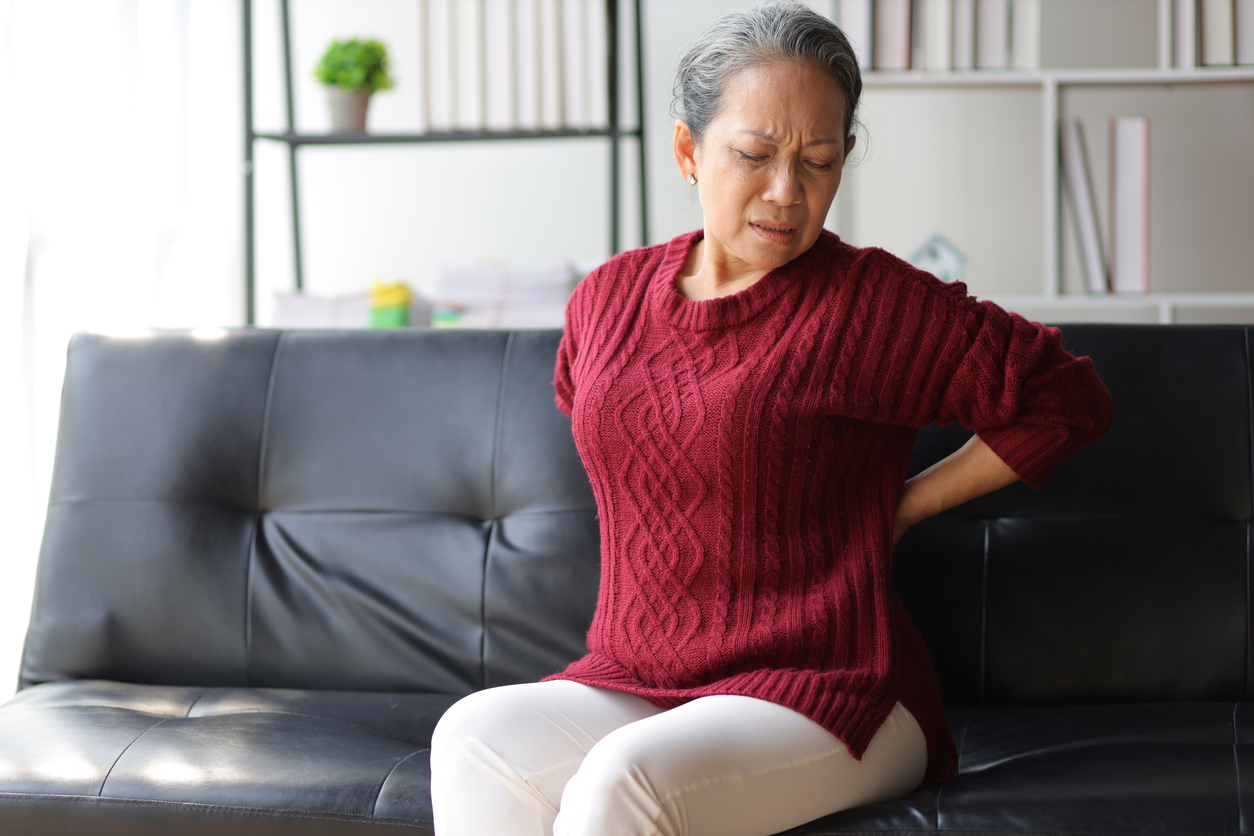Causes of Osteoporosis
Bone is a living tissue that undergoes continuous remodeling, a balance between bone formation and bone resorption. Osteoporosis develops when this balance tips toward bone loss, often due to:
- Aging: Bone density peaks in the early 20s and begins to decline as part of the natural aging process.
- Hormonal Changes: Reduced levels of estrogen in women during menopause and lower testosterone levels in men can lead to bone loss.
- Nutritional Deficiencies: Inadequate intake of calcium and vitamin D can weaken bones.
- Lifestyle Factors: Sedentary behavior, smoking, and excessive alcohol consumption contribute to bone loss.
- Medications and Diseases: Long-term use of corticosteroids and certain conditions like rheumatoid arthritis, hyperthyroidism, or gastrointestinal disorders can increase risk.
Symptoms of Osteoporosis
Osteoporosis is often symptomless until a fracture occurs. However, some signs and complications include:
- Fragility fractures, often in the hip, spine, or wrist.
- Loss of height over time.
- A stooped posture or kyphosis (hunchback).
- Persistent back pain caused by vertebral fractures.
Who Is at Risk?
Risk factors for osteoporosis include:
- Gender: Women are at higher risk due to smaller, thinner bones and hormonal changes post-menopause.
- Age: Risk increases with age for both men and women.
- Family History: A genetic predisposition can increase susceptibility.
- Body Size: Smaller, thinner individuals have less bone mass to draw from as they age.
Prevention Strategies
Osteoporosis is preventable through lifestyle changes and proactive care:
- Calcium and Vitamin D: Ensure adequate intake through diet or supplements. Dairy, leafy greens, and fortified foods are excellent sources of calcium, while sunlight exposure helps synthesize vitamin D.
- Exercise: Weight-bearing and resistance exercises strengthen bones and improve balance, reducing the risk of falls.
- Healthy Lifestyle: Avoid smoking and excessive alcohol consumption.
- Regular Screenings: Bone density tests, such as DEXA scans, help assess risk and detect early bone loss.
Treatment Options
Although osteoporosis cannot be completely cured, treatment can significantly improve quality of life and reduce the risk of fractures:
- Medications:
- Bisphosphonates: Prevent bone loss and increase bone density.
- Hormone Replacement Therapy (HRT): Beneficial for postmenopausal women.
- Anabolic Agents: Promote bone formation in severe cases.
- Diet and Supplements: Continue a diet rich in calcium and vitamin D.
- Lifestyle Modifications: Implement fall prevention measures and maintain an active lifestyle.
Living with Osteoporosis
For those diagnosed with osteoporosis, managing the condition involves a combination of medical treatments, lifestyle adjustments, and support:
- Create a fall-proof home environment by removing tripping hazards.
- Engage in exercises tailored to improve strength and balance under medical supervision.
- Join support groups to connect with others dealing with similar challenges.
Conclusion
Osteoporosis is a manageable condition with early detection and appropriate intervention. Maintaining a healthy diet, staying active, and consulting healthcare professionals for regular screenings are essential steps in reducing the risk of developing osteoporosis or mitigating its effects. Through education and proactive measures, individuals can enjoy better bone health and an improved quality of life.
If you or someone you know is interested in care management or home healthcare services in South Florida, FirstLantic can help. We are locally owned and operated, providing our patients with the highest quality in-home care services in Fort Lauderdale (Broward County), as well as in-home care services in Delray Beach (Palm Beach County), North Miami (Miami-Dade) and Jupiter (Treasure Coast) since 2000. Click here to contact us.
 AVAILABLE 24 HOURS A DAY/7 DAYS A WEEK
AVAILABLE 24 HOURS A DAY/7 DAYS A WEEK Careers
Careers







